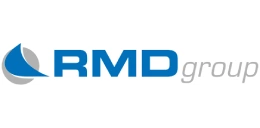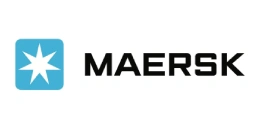Cost Model for a Di-calcium Phosphate Plant: A Detailed Breakdown of CAPEX and OPEX
_11zon.webp)
What is Di-calcium Phosphate?
Animal feed grade Di-calcium Phosphate (DCP) is a mineral feed supplement commonly applied in animal and poultry nutrition to fortify dietary calcium and phosphorus—two of the most important nutrients in maintaining animal health and production levels.
Key Applications Across Industries:
Manufactured predominantly through the reaction of phosphate rock-based phosphoric acid with calcium carbonate or lime, feed-grade DCP is generally found as a white or off-white granular or powdered material. It provides superior bioavailability so that animals can effectively absorb the calcium and phosphorus essential for healthy bone development, enhanced fertility, increased growth performance, and efficient feed conversion ratios. In poultry rearing, it aids in eggshell synthesis and bone strength, whereas in cattle and dairy production, it improves milk yield as well as reproductive efficiency. In aquaculture, DCP enhances the skeletal growth and survival of fish and shrimp. Its low impurity content, stability, and cost-effectiveness make it a reliable selection in compound feed formulations worldwide.
What the Expert Says: Market Overview & Growth Drivers
The India animal feed grade Di-calcium Phosphate (DCP) market size reached USD 90.0 Million in 2024. Looking forward, IMARC Group estimates the market to reach USD 167.3 Million by 2033, exhibiting a CAGR of 7.2% from 2025-2033. The demand for animal feed grade DCP is spurred by increasing global demand for meat, milk, and eggs, driven by population expansion, urbanization, and dietary changes in favor of increased protein intake.
To supply this demand, livestock and poultry producers are concentrating on performance-driven nutrition, increasing the utilization of feed phosphates such as DCP. Increased industrial-scale poultry, cattle, swine, and aquaculture farming in developing nations like India, China, and Brazil also drive growth further. Further, DCP's efficiency in enhancing feed efficiency and minimizing wastage of nutrients is also in line with sustainability objectives and thus is a favored additive. Increasing worries about animal health, fertility, and bone-disease issues are also compelling manufacturers of feed to add high-quality phosphates to their products. Additionally, government support for fortified feed, combined with improved product purity and bioavailability through technological progress in phosphate processing, is enhancing market demand. Increased use of feed-grade DCP in premixes and compound feeds places it at the forefront of productivity drivers in the global animal husbandry sector.
Case Study on Cost Model of Di-calcium Phosphate Manufacturing Plant:
Objective
One of our clients reached out to us to conduct a feasibility study for setting up a large-scale di-calcium phosphate manufacturing plant.
IMARC Approach: Comprehensive Financial Feasibility
We developed a comprehensive financial model for the setup and operation of a proposed di-calcium phosphate manufacturing plant in India. This plant is designed to produce 51,000 tons of di-calcium phosphate annually.
Manufacturing Process: Manufacturing process of animal-grade dicalcium phosphate (DCP) begins by wet-grinding phosphate rock to a thick slurry and treating with concentrated hydrochloric acid in a closed, agitated defoamer vessel to digest P2O5 and vent CO2 and fluorosilicic acid. Following ~40–50 minutes of acid digestion, the slurry is pumped to a defluorinator where a sodium salt (usually saturated NaCl solution) is added in excess to precipitate fluoride as sodium fluosilicate. The slurry is transferred next to a precipitator, where silica filter aids and, if required, non-ionic flocculants (e.g., polyacrylamide) are added for solid–liquid separation improvement. Partial neutralization with accurately measured calcium (lime or calcium hydroxide) increases pH in steps; quantitative DCP precipitation results near pH ~5.6 (≈45–60 parts Ca(OH)2/100 parts rock), whereas lower pH additions precipitate 10–20% fractions employed for low-grade fertilizer. Solids are filtered, purified filtrate is stored, and excess calcium is added to cause precipitation of bulk DCP. Final DCP cake is filtered, dried, and packaged (<0.04% F typical); usual recovery from 72% TCP rock is ~60–64% feed-grade DCP.
_11zon.webp)
Get a Tailored Feasibility Report for Your Project Request Sample
Mass Balance and Raw Material Required: The primary raw materials used in the animal feed grade Di-calcium Phosphate (DCP) producing plant are phosphate rock, hydrochloric acid, sodium chloride, calcium hydroxide, anti-foam agent (Kerosene), flocculant (polyacrylamide) and silica filter aid. For a plant producing 1 ton of animal feed grade Di-calcium Phosphate (DCP), 1.60 ton of phosphate rock, 1.0 ton of hydrochloric acid, 0.09 ton of sodium chloride, 0.35 ton of calcium hydroxide, 0.004 ton of anti-foam agent (Kerosene), 0.0001 ton of flocculant (polyacrylamide) and 0.010 ton of silica filter aid are required.
Machineries Required:
- Silo
- Belt conveyor
- Bucket Elevator
- Jaw Crusher
- Cone Crusher
- Ball Mill
- Vibrating Screen
- Bucket elevator
- Silo
- Screw Conveyor
- Premixer
- Acid Storage Tank
- Acid Pump
- Reactor
- Immediate Tank
- Defluorination Tank
- Liquid pump
- Plate and frame filter press
- Centrifuge
- Neutralization Tank
- Sedimentation Tank
- Hot air furnace
- Screw Conveyor
- Rotary Flash Dryer
- Cooler
- Draught Fan
- Bag Dust Collector
- Air Compressor
- Washing Tower
- Circulation Pump
- Circulation Pool
- Raymond Mill
- Rotary Klin
- Cyclone Dust Collector
- Circulation Pump
- Circulation Pool
- Screw Conveyor
- Automatic Packaging Machine
- Automatic Control System
Techno-Commercial Parameter:
- Capital Investment (CapEx): Capital expenditure (CapEx) in a manufacturing plant includes various investments essential for its setup and long-term operations. It covers machinery and equipment costs, including procurement, installation, and commissioning. Civil works expenses involve land development, factory construction, and infrastructure setup. Utilities such as power, water supply, and HVAC systems are also significant. Additionally, material handling systems, automation, environmental compliance, and safety measures are key components. Other expenditures include IT infrastructure, security systems, and office essentials, ensuring operational efficiency and business growth.
- Operating Expenditure (OpEx): Operating expenditure is the cost incurred to operate a manufacturing plant effectively. Opex in a manufacturing plant typically includes the cost of raw materials, utilities, depreciation, taxes, packing cost, transportation cost, and repairs and maintenance. The operating expenses are part of the cost structure of a manufacturing plant and have a significant effect on profitability and efficiency. Effective control of these costs is necessary for maintaining competitiveness and growth.
_11zon.webp)
- Profitability Analysis Year on Year Basis: The proposed animal feed grade Di-calcium Phosphate (DCP) plant, with a capacity of 51,000 tons of animal feed grade Di-calcium Phosphate (DCP) annually, achieved an impressive revenue of INR 1.6 billion in its first year. We assisted our client in developing a detailed cost model, which projects steady growth, with revenue rising throughout the projected period. Moreover, gross profit margins improve from 27.9% to 28.1% by year 10, and net profit rises from 13.0% to 19.3%, highlighting strong financial viability and profitability.
_11zon.webp)
Conclusion & IMARC's Impact:
Our financial model for the animal feed grade Di-calcium Phosphate (DCP) manufacturing plant was meticulously developed to meet the client’s objectives, providing an in-depth analysis of production costs, including raw materials, manufacturing, capital expenditure, and operational expenses. By addressing the specific requirements of producing 51,000 tons of animal feed grade Di-calcium Phosphate (DCP) annually, we successfully identified key cost drivers and projected profitability, considering market trends, inflation, and potential fluctuations in raw material prices. This comprehensive financial model equipped the client with valuable insights into strategic decision-making, demonstrating our commitment to delivering high-quality, client-focused solutions that ensure the long-term success of large-scale manufacturing ventures.
Latest News and Developments:
- In February 2025, the world leader in phosphate-based plant and animal nutrition solutions, OCP Group, and Fertinagro Biotech S.L., a significant fertiliser manufacturer in Spain, are happy to announce that OCP Group has increased its ownership of GlobalFeed S.L. by 25%, increasing its overall stake to 75%.
- In August 2024, the US-based business Natural Enrichment Industries (NEI), which produces calcium phosphate salts (TCP), has been formally acquired by Prayon, a major leader in phosphorus chemistry worldwide. This calculated action strengthens the Group's position on the global market for high-value calcium phosphate salts and represents a major turning point in its growth in the US.
- In May 2024, Budenheim, a chemical specialist, has announced new high-quality products for Early-Life, Preventive, and Medical Nutrition in addition to an additional 4,400 tonnes of capacity each year. Mineral phosphate samples can now be ordered from the company's brand-new "House of Nutrition" starting this month, with full production anticipated later this year. This accomplishment marks the most recent significant milestone in Budenheim's 57-million-euro investment at its German location. With its 5,000 square meters of dedicated production space, the "House of Nutrition" establishes a new hygienic benchmark for sustainable mineral phosphate products such as PureMin®.
- In April 2024, Leading the food and nutritional ingredient sector, Innophos announced a major improvement to its calcium phosphate production facility for EC (European Commission) grade. In order to satisfy the increasing demand in the EU food and dietary supplement industries, this capital expenditure is a calculated step.
Why Choose IMARC:
IMARC's Financial Model Expertise: Helping Our Clients Explore Industry Economics
IMARC is a global market research company that offers a wide range of services, including market entry and expansion, market entry and opportunity assessment, competitive intelligence and benchmarking, procurement research, pricing and cost research, regulatory approvals and licensing, factory setup, factory auditing, company incorporation, incubation services, recruitment services, marketing and sales.
Under our factory setup services, we assist our clients in exploring the feasibility of their plants by providing comprehensive financial modeling. Additionally, we offer end-to-end consultation for setting up a plant in India or abroad. Our financial modeling includes an analysis of capital expenditure (CapEx) required to establish the manufacturing facility, covering costs such as land acquisition, building infrastructure, purchasing high-tech production equipment, and installation. Furthermore, the layout and design of the factory significantly influence operational efficiency, energy consumption, and labor productivity, all of which impact long-term operational expenditure (OpEx). So, every parameter is covered in the analysis.
At IMARC, we leverage our comprehensive market research expertise to support companies in every aspect of their business journey, from market entry and expansion to operational efficiency and innovation. By integrating our factory setup services with our deep knowledge of industry dynamics, we empower our clients to not only establish manufacturing facilities but also strategically position themselves in highly competitive markets. Our financial modeling and end-to-end consultation services ensure that clients can explore the feasibility of their plant setups while also gaining insights into competitors' strategies, technological advancements, and regulatory landscapes. This holistic approach enables our clients to make informed decisions, optimize their operations, and align with sustainable practices, ultimately driving long-term success and growth.
Our Clients
Contact Us
Have a question or need assistance?
Please complete the form with your inquiry or reach out to us at
Phone Number
+91-120-433-0800+1-201-971-6302
+44-753-714-6104










